Come April, and the mood in Assam takes on a whole different vibe. Vibe of festivity, joy and greatest joy! It's Bihu festival time!
'অতিকৈ চেনেহৰ মূগাৰে মহুৰা
তাতোকৈ চেনেহৰ মাকো
চেনেহৰ চেনেহৰ ৰঙালী বিহুটি
নেপাতি কেনেকৈ থাকোঁ ''
Bihu is the important cultural festival in Assam. It is the primary festival celebrated with much fervor by the Assamese people throughout the state and throughout the world regardless of color, creed, religion, beliefs and beliefs.
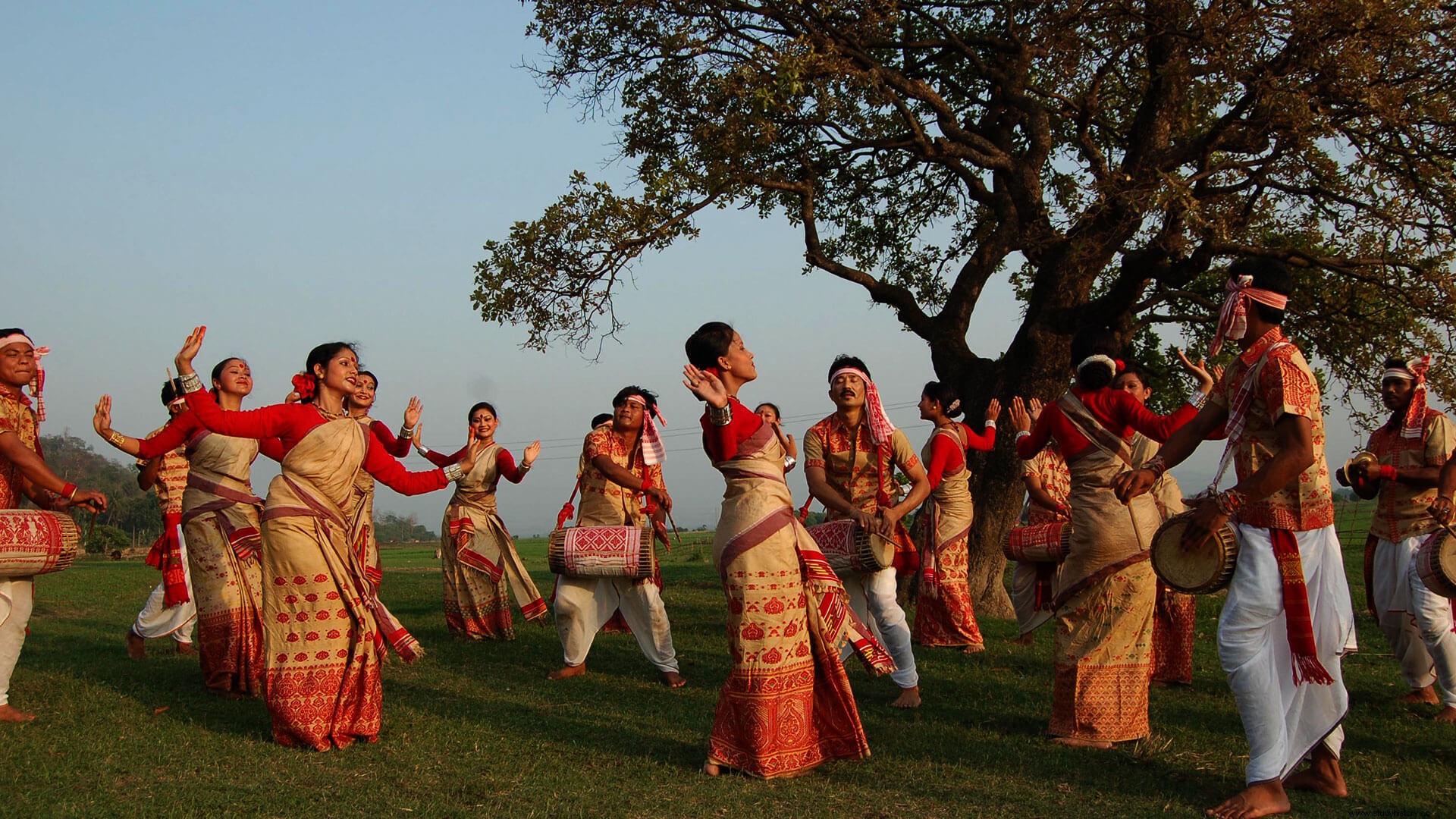
Image Source: Adotrip
Types of Bihu
There are three main types of Bihu celebrated at different times of the year.
- Rongali Bihu (or Bohag Bihu),
- Kongali Bihu (or Kati Bihu) and
- Bhogali Bihu (or Magh Bihu)
Rongali Bihu falls in April (which is the Bohag month in Assamese), Kongali Bihu falls in mid-October (which is the kati month in Assamese) and Bhogali Bihu falls in January (which is the magh month in Assamese). However, among these three Bihu types, Rongali Bihu is celebrated with much pomp and festivity.
Origin:
As for the origin of Bihu, there are two primary schools. One school believes that the word Bihu comes from the language of Dimasa Kacharis and Bodo. Another line of thought claims that the word Bihu comes from the Sanskrit word 'Vishu' which means spring equinox on winter solstice. The three Bihu coincide with the farming calendar. They are also recognized as a celebration of the farming season in different periods. Since the traditional Assamese population is mostly engaged in agriculture, the Bihu Festival is thus associated with farming.
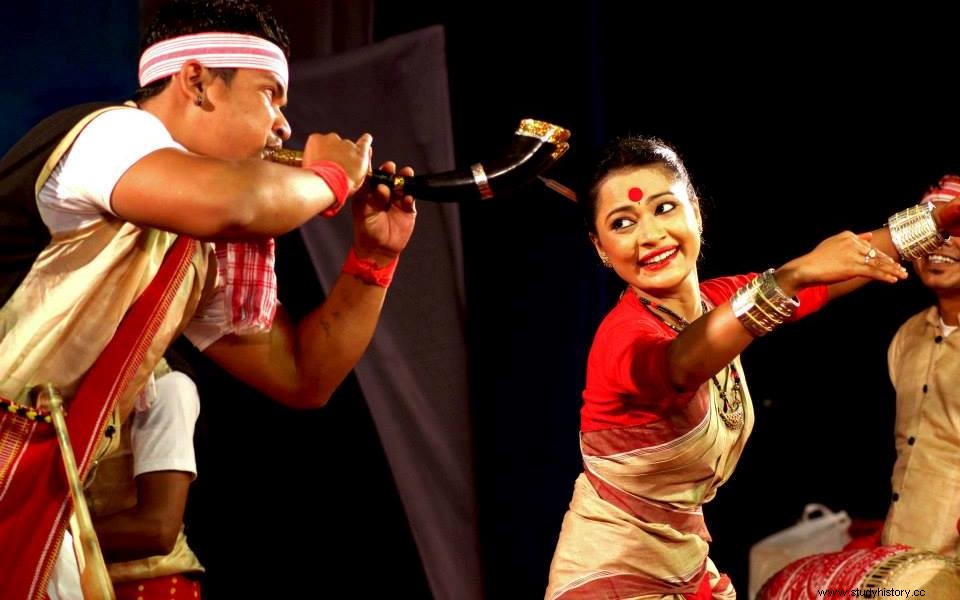
Image Source: Joydeep Hazarika
Rongali Bihu
Rongali Bihu is the most important of all the three Bihus. As this Bihu falls in the Assamese month of Bohag, it is also popularly called 'Bohag Bihu'. This Bihu falls in mid-April at the beginning of the Assamese month of Bohag. It is celebrated to mark the beginning of the agricultural season. The Assamese New Year also begins with this Bihu. Bohag Bihu is celebrated in different forms in different parts of India. In the northern state of Punjab, the same festival is celebrated as 'Baisakhi' and similar different places have different names and their versions. Rongali Bihu is celebrated for about a month with various festivities that take place during the month of Bohag. The people rejoice over the Bohag Bihu festival with much joy and fervor and the party starts first, and the farmers prepare the fields for the rice field production. Women in the village and urban areas prepare delicacies such as pitha, laru, jolpan (these are traditional foods prepared mainly from rice).
Goru and Manuh Bihu
The first day of Rongali Bihu is known as Goru or Cow Bihu. On this day, all cows and cattle herds are washed and religiously worshiped. This day falls on the last day of the year before. The cattle herd is smeared with oiled turmeric paste, bathed in rivers and streams, and then left to roam. In the evening when the cows come home, the owners throw away the old cattle bindings and use new ropes after cultivating and feeding the cattle. The next day, which is the first day of the Assamese New Year, is Manuh Bihu. On this day (which usually falls on April 15), people are cleaned up and put on new clothes. Elders are respected, and young people receive blessings from them. People visit relatives and friends' houses to greet the New Year with joy. The third day of Bohag Bihu is known as Gosai (God) Bihu. This day offers statues of God seeking a prosperous year ahead. Rongali Bihu is the most celebrated Bihu with a lot of festivity.
Bihu Geet
Bihu Geets are popular Bihu songs and are an important part of the Bihu Festival. The lyrics to the songs merge from telling natural beauty to a lover's expression, from questions about social consciousness to the humorous stories. One of the greatest folk cultures at the Bihu Festival, Bihu songs are very popular, and the game includes the use of a variety of instruments in its fold. The songs express the traditions and rich culture of Assam and Assamese.
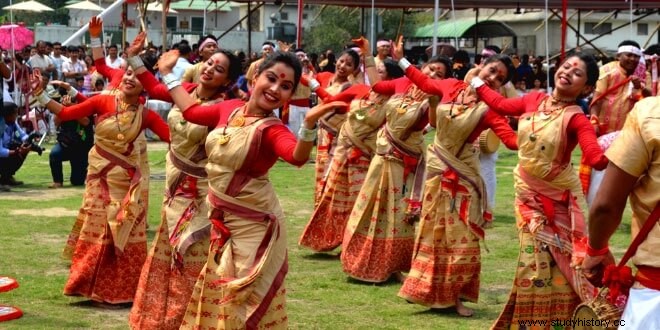
Image Source: Sentinelassam
Bihu-dans
Bihu dance is the folk dance of Assam. It is a joyous dance performed by both men and women in groups. The dance is characterized by fast steps highlighted by expressive hand movements. Although both male and female dancers dance in different formations, the rhythm and coordination of the dance is the same and significant in the Bihu dance. The female Bihu dance has many variations, and the dance has different stages from dance forms to dance in coordination with the instruments being played. The stages include freehand, twisting, dancing with the rhythm of pepa blowing, with kahi and jaapi. There are different forms of Bihu dance such as the Mising Bihu dance and the Deori Bihu dance for the different underclass of Assamese culture.
Husori
Husori is another important aspect of Bihu. Here the village elder goes from household to household and sings the Bihu goat and performances. People traditionally welcome Husori groups into their homesteads and seek their blessings for the household after the performances.
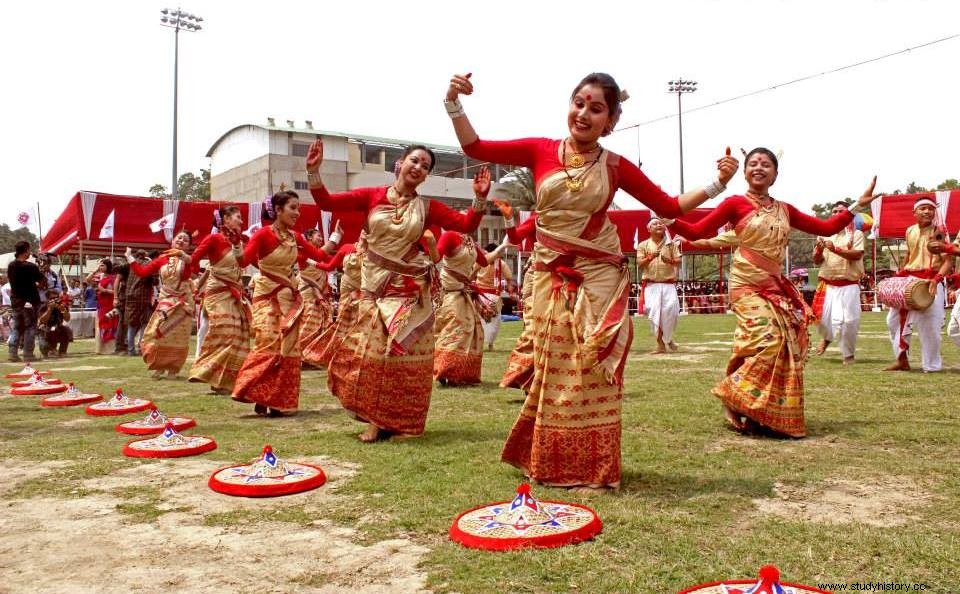
Image Source: Joydeep Hazarika
Mukoli Bihu
Mukoli Bihu is witnessing young unmarried men and women wearing rich traditional golden silk muga dresses. They perform the Bihu dance together and also sing Bihu songs in open fields.
Jeng Bihu
Jeng Bihu is performed and seen exclusively by women. The name "Jeng" is derived from the fact that village women in the past used to surround their place of performance with sticks dug into the ground. Jeng Bihu form is also popularly known as Gos tolor Bihu.
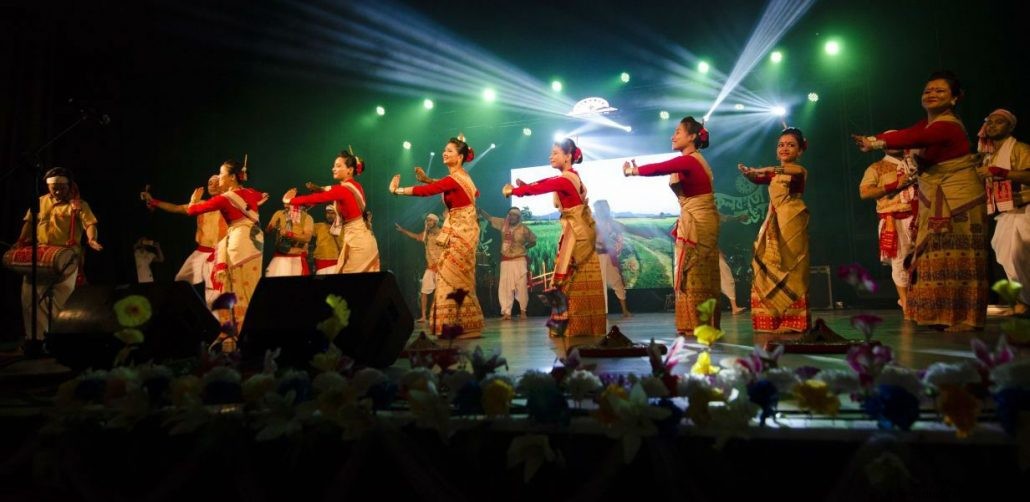
Image Source: Northeast now
Bihutoli Bihu
Bihutoli Bihu is the urban form of Bihu we see today, where the cultural rural festival went over to the city's modernized city life. Bihutoli Bihu first started in the Latasil field in Guwahati, organized by Guwahati Bihu Sanmilani in 1962. It was promoted by renowned personalities such as Radha Govinda Baruah, Khagen Mahanta. In this form of Bihu celebration, dancers perform together in a temporarily elevated stool popularly called Bihutoli. However, Bihutoli Bihu does not limit the performances only to Bihu dancers. The performances include a number of other theater performances; other dance forms, solo concerts and stand-up comedy, among others. The Bihu shape stage has become so popular that various Bihu organizers have extended the celebration to Bohagi Bidai, which is celebrated to offer a farewell to the festive Bohag month.
Instruments used in Bihu
Bihu celebration is insignificant with the traditional instruments of Assam. There are a number of instruments used during Bihu performances, Bihu geets and dances. Some of them are:
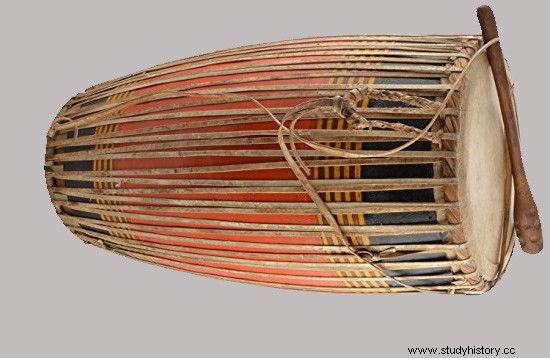
Image Source:Asia InCH
Dhol
It is a prominent and important instrument of Assamese culture and identity. Dhol is a percussion instrument much like a drum. Made of wooden barrels, it is played with a stick and the palm on each side. Dhol beats depict the life of Assamese culture. A beat from Dhol makes one whirl and dance to the rhythmic flow.
Language
It's a small cymbal instrument. There are different types of languages.
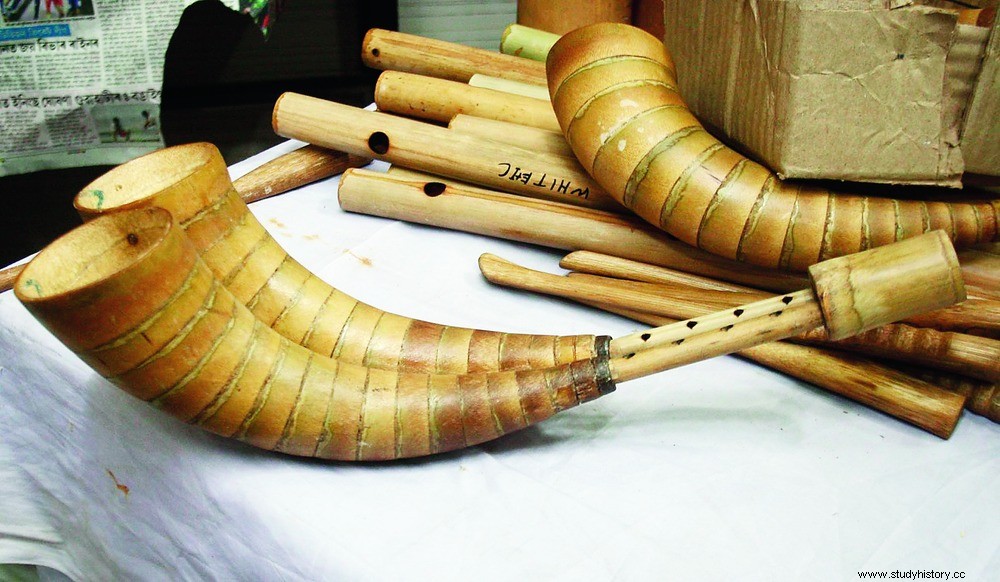
Image Source: Telegraph India
Pepa
Pepa is a flute-like musical instrument used in Bihu. It is a small tribe with a buffalo horn. The sounds from Pepa are remarkable and striking.
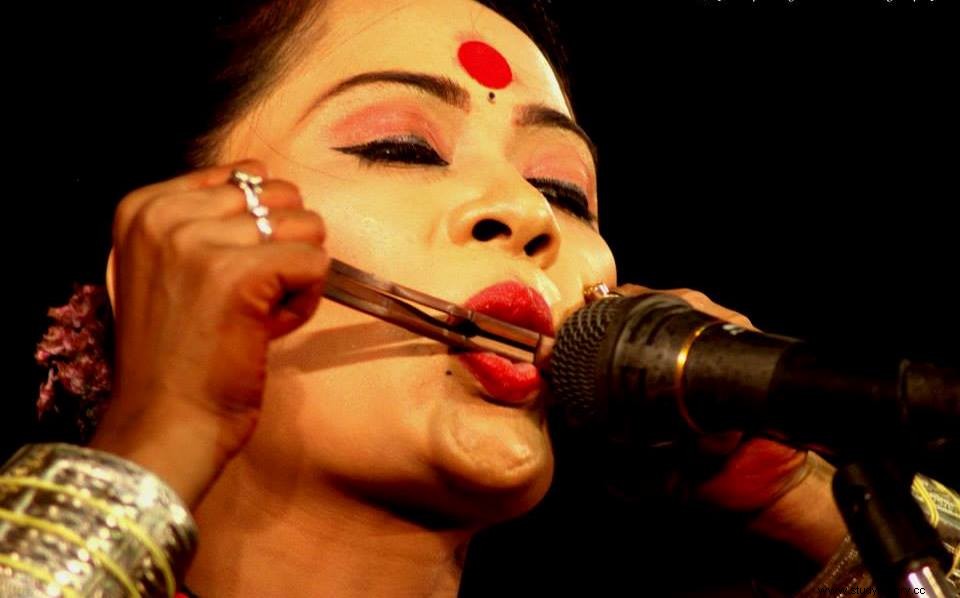
Image Source: Joydeep Hazarika
Other instruments used in Bihu performances include Toka, Gagana, Xutuli and Baanhi (flute).
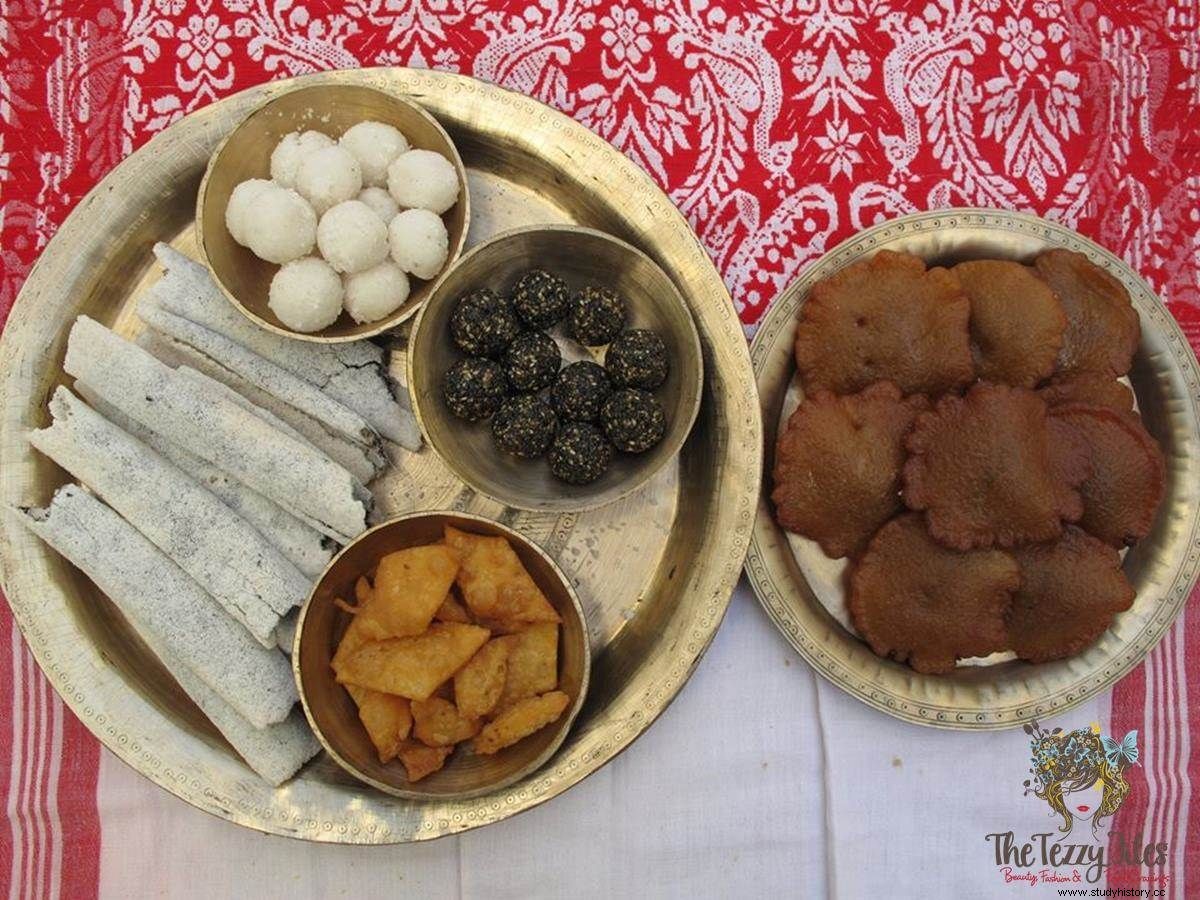
Image Source: Pinterest
Bhogali Bihu
Bhogali Bihu is also called Magh Bihu as it falls on the Assamese month of Magh. It is also Bihu that celebrates autumn when food is available in abundance. Therefore, it is known as Bhogali for eating and enjoying (Bhog means food). This Bihu marks the end of the autumn period, and grain magazines at this time are full. There is a lot of partying and eating under this Bihu.
The night before Bhogali Bihu Day is called Uruka. On this day, the young men go to the nearby field and build a temporary cottage called Bhelaghar and also a Meji with hay. During the night, the people of the village cook in Bhelaghar, and a community emerges. The whole night is spent at the Meji party and playing games. Men and boys roam the courtyards stealing vegetables and firewood as fun. In the morning, the people take a bath and then burn Meji. They offer pithas to the fiery Meji and pray to the Fire God to mark the end of the fall season. The day is characterized by different types of sports such as buffalo fighting, egg fighting and cockfighting.
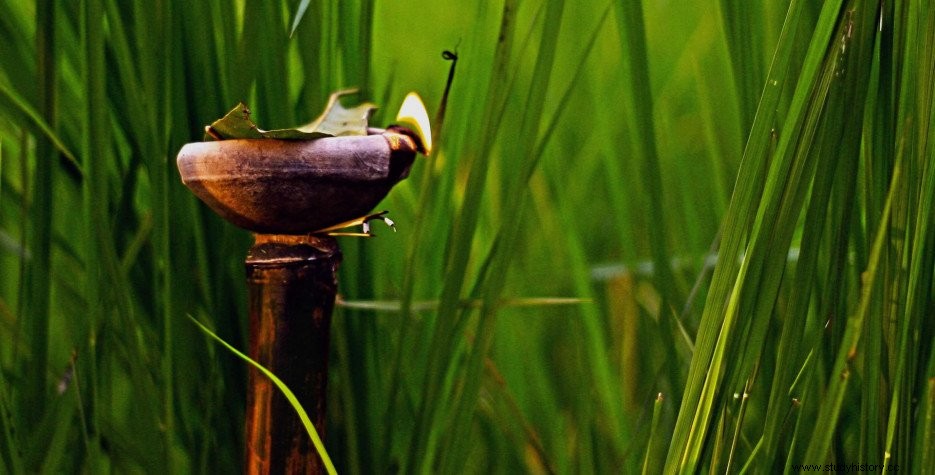
Image Source: Holidays
Kongali Bihu
Kongali Bihu is also known as Kati Bihu as it falls on the Assamese month of Kati. It falls in mid-October and is Bihu with less desire. This Bihu is characterized by a sense of solemnity as the grain magazines are almost empty during this season. At this Bihu, people light a ground lamp in front of the tulsi plant, the granary, the garden and the rice fields, and the cattle are fed pithas. This Bihu is associated with the lighting of the earth lamp or 'akaxbonti' on the tip of a bamboo pole to show the souls of the dead the way to heaven.
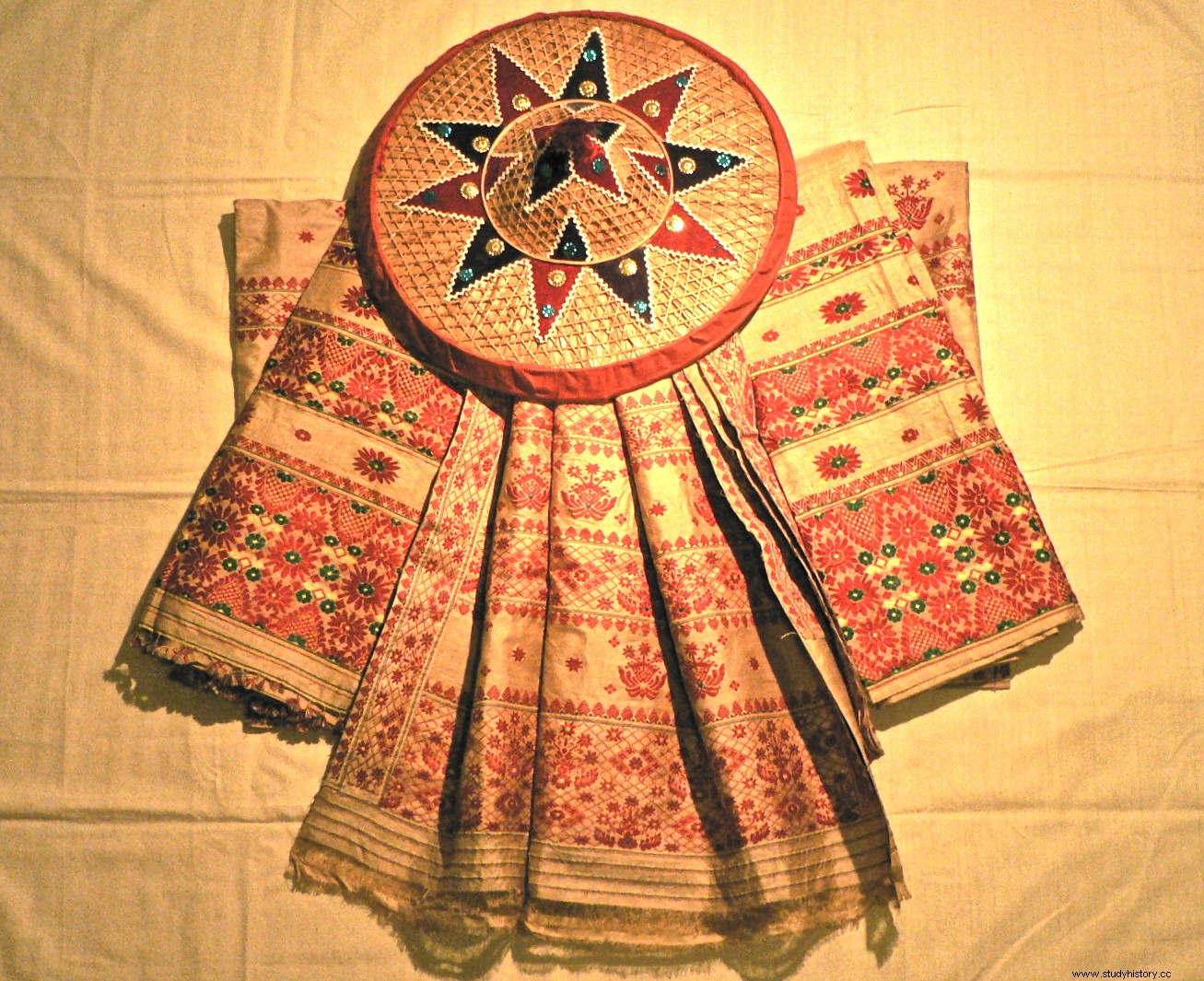
Image Source: London Bihu Committee
Celebration of Bihu outside Assam
Bihu is a celebration all over the state of Assam with much fanfare. It is also celebrated by Assamese all over India and the world. The Assamese people living in states all over India celebrate by performing functions in Assamese communities. Likewise abroad, various Bihu associations and local communities celebrate this festival with great enthusiasm. The London Bihu Committee is among the most important groups.
The three forms of Bihu are glorious and important in their identity and significance. If Rongali Bihu is about color and festivity, Bhogali Bihu is about reaping the results of a good harvest through partying and joy. Kongali Bihu prays to the Lord for a good and abundant harvest. It sums up that 'harvesting' is an essential element of Bihu and Assamese culture. Bihu is truly a special festival and an opportunity for everyone to gather and enjoy a good gathering!
